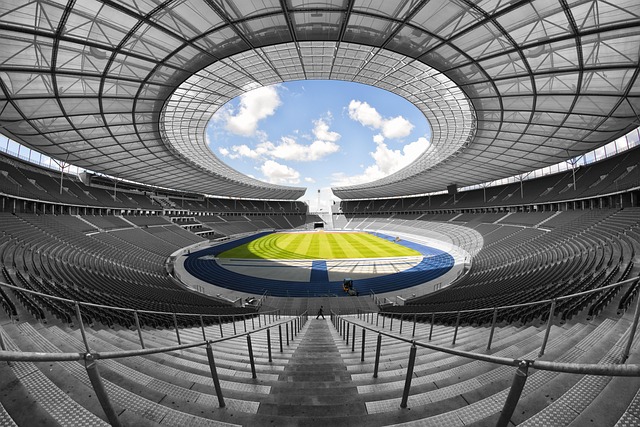In professional flat roof installation, selecting robust, weather-resistant materials is key to structural soundness and extended roof life. Lightweight options reduce strain on supporting structures, prevent moisture-related issues, and offer superior durability compared to traditional heavy materials. High-quality metals like tin, copper, and stainless steel, as well as modern synthetic membranes such as TPO and EPDM, provide excellent water tightness, UV, temperature, and chemical resistance. Meticulous installation techniques, including precise substrate preparation, thorough sealing, and suitable fasteners, ensure a robust roof with proper ventilation to prevent heat damage, thereby prolonging its lifespan.
In the realm of roofing, especially for flat roofs, selecting the right materials is paramount for longevity and durability. This article delves into the significance of using lightweight and weather-resistant options in a professional flat roof installation. We explore how these materials not only enhance structural integrity but also offer ease of installation and superior performance in diverse weather conditions. By embracing sustainable practices, homeowners can ensure their roofs stand the test of time while contributing to environmental preservation.
Understanding the Importance of Weather-Resistant Materials for Flat Roofs
In the realm of professional flat roof installation, selecting the right materials is paramount for ensuring structural integrity and longevity. Weather-resistant materials play a pivotal role in protecting against the elements, which can otherwise cause significant damage over time. From harsh winds to heavy rainfall, these roofs are subjected to constant exposure, making weather-resilient options not just a preference but an absolute necessity.
Choosing lightweight yet robust materials offers multiple benefits, including reduced strain on structural supports and easier installation processes. Moreover, they significantly decrease the risk of leaks, rot, or other forms of damage that can arise from prolonged moisture contact. For these reasons, professionals recommend opting for weather-resistant solutions, ensuring a more durable and low-maintenance flat roof.
Choosing Lightweight Options for Longevity and Ease of Installation
When considering materials for a flat roof installation, selecting lightweight options can significantly impact the overall longevity and ease of the process. In the realm of professional flat roof installation, traditional heavy materials often pose challenges in terms of structural support and labor-intensive installation. However, modern innovations have introduced lightweight alternatives that not only reduce the weight burden but also enhance durability in various weather conditions.
By choosing lightweight materials, installers can navigate complex roofs with greater ease, minimizing the risk of damage during the installation process. This is particularly beneficial for commercial buildings or residential properties with unique architectural designs. Moreover, these lightweight options often prove to be more weather-resistant, ensuring that the roof remains intact and secure even during harsh storms or extreme temperature fluctuations.
Common Weather-Resistant Materials in Professional Flat Roof Installation
When it comes to professional flat roof installations, choosing weather-resistant materials is paramount for ensuring longevity and durability. Common options include high-quality metals like tin, copper, and stainless steel. These materials not only withstand harsh weather conditions but also offer excellent corrosion resistance, making them a top choice for many commercial and industrial projects. Their lightweight nature is another advantage, as it reduces the structural load on the building, saving on additional reinforcement costs.
Additionally, modern synthetic materials such as TPO (thermoplastic olefin) and EPDM (ethylene propylene diene monomer) have gained popularity in professional flat roof installations. These flexible membranes provide superior water tightness and are highly resistant to UV rays, extreme temperatures, and chemical corrosion. Their ease of installation and lower cost compared to metals make them a versatile and practical choice for various applications, catering to both new construction and roof replacement projects.
Ensuring Proper Installation Techniques for Optimal Performance
A professional flat roof installation is only as good as the techniques employed during its creation. Ensuring optimal performance and longevity requires meticulous attention to detail throughout the installation process. This includes properly preparing the substrate, meticulously sealing all joints and edges, and utilizing the appropriate fasteners for the specific materials used.
Professional installers understand that accurate measurements are crucial, ensuring materials are cut precisely to fit seamlessly. Proper ventilation is another key aspect often overlooked; adequate airflow prevents heat buildup, which can lead to premature material degradation. By adhering to these installation best practices, a flat roof not only gains added protection from the elements but also extends its overall lifespan.
Benefits of Using Lightweight, Weather-Resistant Materials: A Case for Sustainability
Using lightweight, weather-resistant materials offers numerous advantages for professional flat roof installations. One of the key benefits is enhanced structural integrity and longevity. Traditional heavy roofing materials can put excessive strain on supporting structures, especially in regions with extreme weather conditions. By opting for lighter alternatives, such as modern composite materials or thin metal sheets, the overall weight load on roofs is significantly reduced, minimizing the risk of damage over time.
Moreover, these advanced materials provide superior resistance to harsh environmental factors. They are designed to withstand high winds, heavy rainfall, and extreme temperature fluctuations without compromising their structural integrity. This not only ensures a more durable roof but also contributes to sustainability by reducing the need for frequent repairs or replacements, ultimately lowering maintenance costs for property owners.
In conclusion, adopting lightweight and weather-resistant materials in professional flat roof installations offers a sustainable solution. These materials not only ensure the longevity of roofs but also provide ease of installation. By understanding the importance of weather resistance and choosing the right options, homeowners and professionals can benefit from enhanced performance, reduced maintenance, and environmental sustainability.
